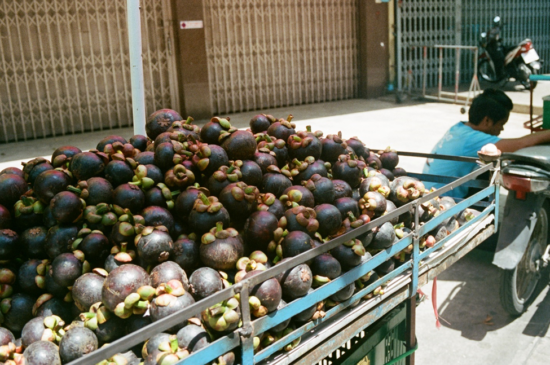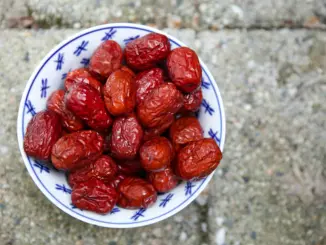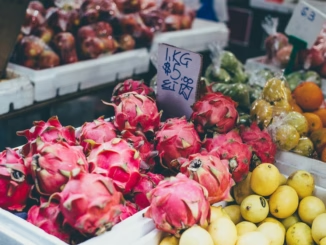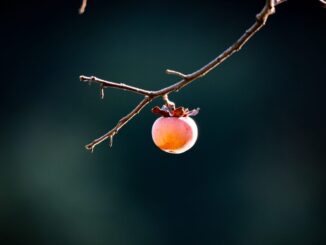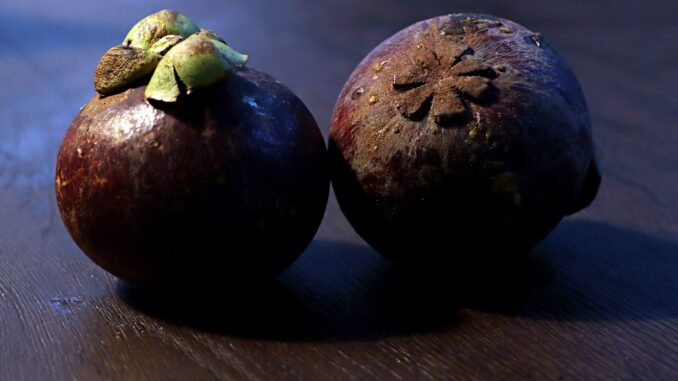
Continuing our exploration of Southeast Asian ingredients, we turn our attention to mangosteen, the “queen of fruits.”
BY EMILY MENESES
SENIOR ONLINE CONTRIBUTOR
Feature image by hartono subagio via Pixabay
As someone raised by two immigrants from the Philippines, I grew up in a household where “unusual” fruits were commonplace. However, I know that there are many ingredients from my childhood that may be foreign to others. I’m sharing my love for these flavors through our series: “Know Your Ingredients.“
In today’s installment, we’re continuing our exploration of Asian flavors by setting our sights on mangosteen. About the size of a small apple, mangosteen has a thick, leathery exterior that when removed reveals soft, white flesh. Its flavor is slightly sweet with a touch of tartness, similar to the taste of lychee. Like any fruit, mangosteen makes a natural addition to culinary dishes, desserts, and beverages alike.
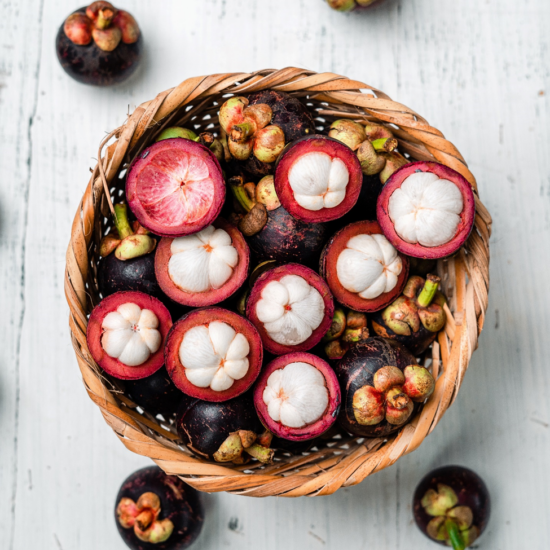
The Origins
Mangosteen’s origins can be traced to Indonesia, Malaysia, Vietnam, Singapore, Sri Lanka, Burma, and the Philippines. Eventually, the fruit made its way to the Caribbean and parts of North, Central, and South America. Most of the mangosteen found in the Western world today is imported from Thailand, where the fruit is available year-round.
European colonists first came across mangosteen in Southeast Asia during the early 1800s. The fruit eventually earned the nickname the “queen of fruits” because Queen Victoria of Great Britain offered to reward anyone who could bring her the fruit while still fresh as it was known to spoil quickly. Today, mangosteen reigns alongside what many call the “king of fruits”: durian.
Cultural Uses
Though mangosteen is typically consumed raw and on its own, it’s also regularly used in sweet baked goods, salads, drinks, and as a flavor in ice cream or sorbet. The fruit is also sometimes used in curry dishes throughout Southeast Asia. Around the world, people also use the peel and rind of the fruit for its medicinal properties; it is high in antioxidants, anti-inflammatory, and a great source of fiber.
Mangosteen in Beverages
Curious to try mangosteen for yourself, or want to incorporate this unique ingredient into your café menu? Like any other fruit, mangosteen pairs well with iced tea—particularly oolong or green tea.
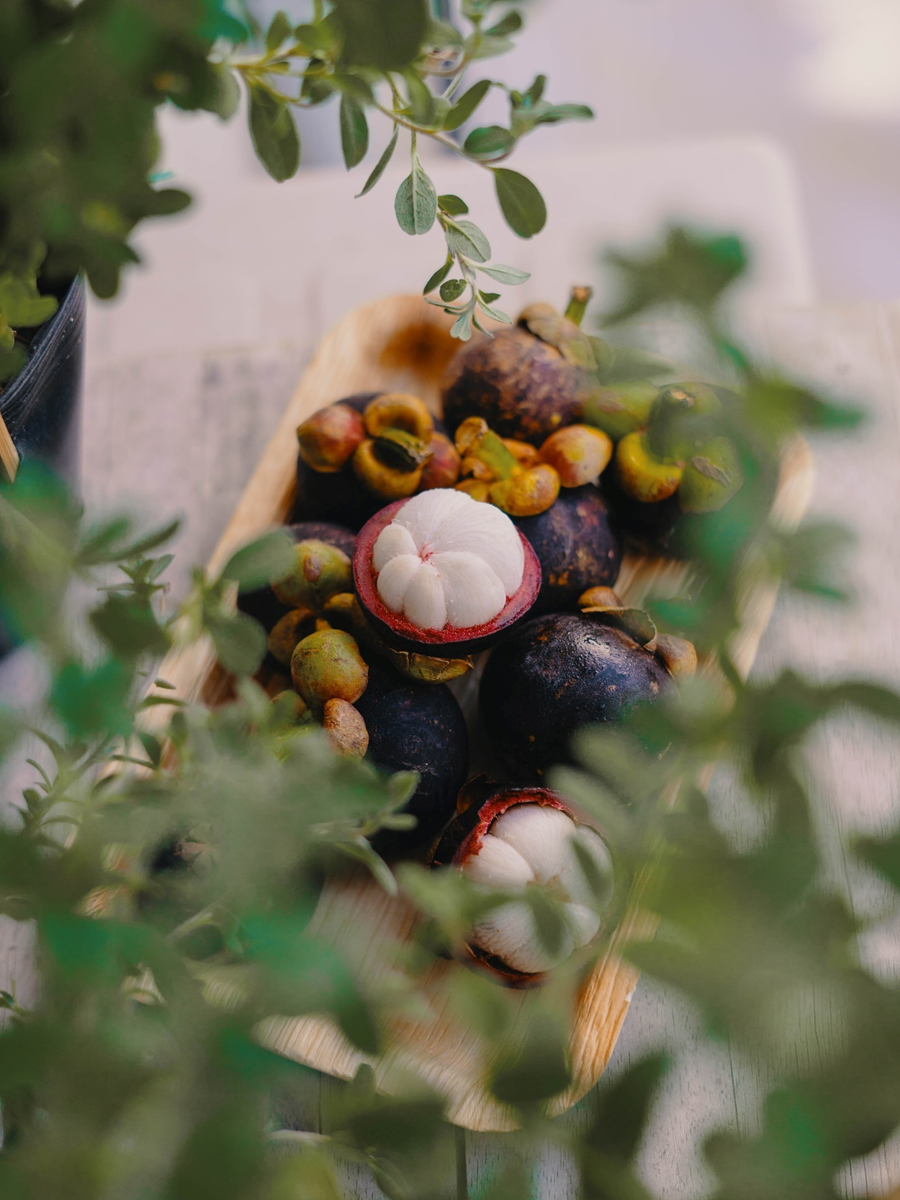
Our Iced Mangosteen Jasmine Green Tea recipe:
Ingredients:
1 cup cane sugar
1 cup water
4-5 mangosteen fruits, peeled and roughly chopped
Jasmine green tea (cooled)
To start making your mangosteen syrup, whisk the sugar and water together in a small saucepan over medium heat. Boil the combination for 5 minutes. Remove the pan from the heat and add your chopped mangosteen, mashing everything together with a potato masher or a fork. Cover the saucepan with a lid and let everything steep for 30 minutes.
Strain the mixture into a bowl or a jar. You can add some of the crushed fruit to the syrup for texture if you’d like. Now you have your mangosteen syrup, which you can add to beverages as you please! Your syrup can be stored in the refrigerator safely for up to a week.
To make your iced mangosteen jasmine green tea, add 2 ounces of your mangosteen syrup to 1 cup of cooled jasmine green tea. Pour into a cocktail shaker or jar and shake until the ingredients are combined. Pour it into a glass and serve! Garnish with mint, a mangosteen peel, or anything your heart desires.
ABOUT THE AUTHOR
Based in Los Angeles, Emily Joy Meneses (she/her) is a writer and musician passionate about culture and collective care. You can regularly find her at Echo Park Lake, drinking a cortado and journaling about astrology, art, Animal Crossing, and her dreams. Explore her poetry, short stories, and soundscapes on her website.

